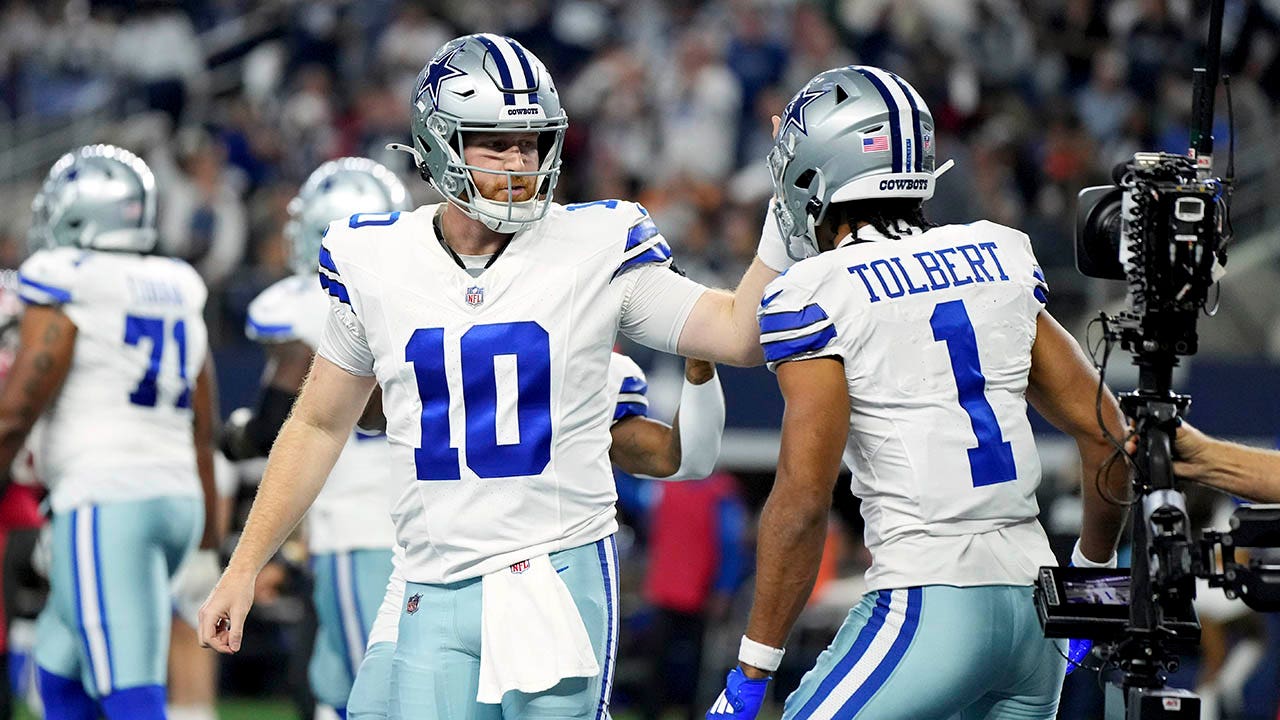That’s a phenomenal number, but just start almost any of Dahl’s books, then try to stop reading. I can testify to the tractor-beam power of his storytelling. After finishing Dennison’s biography, I decided to glance briefly at the opening chapters of “The Witches,” which I had reviewed, ecstatically, when it first appeared in 1983. When I finally lifted my eyes from the page, I was a quarter of the way through the novel, having been caught up all over again in its delicious scariness. Admittedly, “The Witches” remains my favorite among Dahl’s classics, closely followed by his 1988 paean to books and girl power, the wonderful “Matilda.” I didn’t reread it only because I had watched the exuberant — if overly dark — new film version instead. Like nearly all of Dahl’s best work, these two novels celebrate kindness, independent thought, daring, loyalty and self-reliance.
Without supplanting either Jeremy Treglown’s pioneering “Roald Dahl: A Biography” (1993) or Donald Sturrock’s authorized biography, “Storyteller” (2010) — both of which I recommend, especially the latter — this succinct new biography provides just enough information for all but the most ardent Dahl devotee. As in his previous lives of Beatrix Potter and Kenneth Grahame, Dennison again reminds us that children’s authors are, to say the least, complicated people. Dahl, for instance, could face horrific life-or-death crises with heroic self-control, knowing precisely what needed to be done and doing it. In more ordinary circumstances, however, his need to dominate and take command wasn’t much different from that of his own villain, the controlling, paramilitary sadist Miss Trunchbull.
Yet Dahl remains a troubling, complicated figure. Waspishly opinionated, frequently offensive, a hard bargainer with publishers and swaggeringly obnoxious with his editors, he could also be irresistibly charming, outrageously funny and, in his younger days, a relentless Casanova. In later years, he transformed himself into a family man who was distinctly “sparky,” his own word from “Danny the Champion of the World” for what a father should be. Once, while his daughters Olivia and Tessa slept, Dahl wrote their names in weed killer on the lawn outside their bedroom window. “The following morning, he told them it was the work of fairies.” Throughout his life, the writer also practiced, without fanfare, what Dennison describes as “habitual generosity.” To this day, the Dahl estate continues to support specialist pediatric nurses and to underwrite research into neurological and blood diseases.
Born in 1916, Roald Dahl — named after the polar explorer Roald Amundsen — was only 3 when his Norwegian-born father died, leaving a sizable fortune (from shipping and coal). At the prestigious Repton School, young Roald displayed no talent whatsoever for writing. One school report reads: “A persistent muddler. Vocabulary negligible, sentences malconstructed.” After graduation, rather than go on to university, he eagerly took up a job with Shell Oil in Africa, then later joined the Royal Air Force during World War II, flying combat missions over Greece.
Because of head injuries from a crash, the handsome 6-foot-6 flying ace was eventually redeployed to D.C. as a kind of British goodwill ambassador. There, besides doing a bit of intelligence work, he regularly bedded pretty girls and rich society matrons. But his “lucky break” — as he later titled an autobiographical essay — came about after meeting the novelist C.S. Forester. The creator of Captain Horatio Hornblower asked Dahl to write up his crash in the Libyan desert and was so impressed by the result that he sent the piece to the Saturday Evening Post, where it was published on Aug. 1, 1942. Other successful tales about wartime flying soon followed and were collected in 1946 as “Over to You.” But Dahl’s first novel, 1948’s post-apocalyptic “Some Time Never,” proved a disaster, and his second never quite jelled, which isn’t surprising given its tentative title, “Fifty Thousand Frogskins.”
In his 30s, Dahl found his niche as a moderately successful author of sleek, unsettling suspense stories, which he later dubbed “Tales of the Unexpected.” In “Lamb to the Slaughter,” a wife who has killed her husband ingeniously disposes of the highly original murder weapon. In “Taste,” a wine connoisseur stakes his 18-year-old daughter in a bet with a lecherous middle-aged rival over the identification of an obscure vintage of Bordeaux. Upon reading these elegant contes cruels, compiled in the 1953 collection “Someone Like You,” Noël Coward praised Dahl’s imagination as “fabulous” but also noted “an underlying streak of cruelty and macabre unpleasantness, and a curiously adolescent emphasis on sex.” These traits would characterize all his work for adults, including the stories of 1960’s “Kiss, Kiss” and the ribald exploits chronicled in 1979’s “My Uncle Oswald.”
Until 1953, Dahl lived at home in England with his mother, to whom, as Dennison repeatedly emphasizes, he was close all his life. That year, though, he met and successfully wooed the American actress Patricia Neal. Their marriage, though rocky at first, lasted for 30 years, despite several terrible crises, including a traumatic brain injury to their infant son Theo and the death from measles of 7-year-old Olivia. When Neal suffered a debilitating stroke at just 39, Dahl personally oversaw an intense program of therapy and rehabilitation.
It was during these tumultuous years that he turned to writing for children. Dahl was 48 when his first masterpiece, “James and the Giant Peach,” appeared in 1961. Like his eerie adult stories of revenge and comeuppance, his children’s books required many drafts, scribbled longhand on yellow legal pads. He confessed that “when I first thought about writing the book ‘Charlie and the Chocolate Factory,’ I never originally meant to have children in it at all.” On a rejected draft, Charlie was Black.
In his mid-50s, Dahl began an extended affair with the 20-years-younger Felicity Crosland, a friend of Neal. After much angst all around and a bitter divorce, Crosland became his second wife. The marriage proved a happy one, leading to the great works of the 1980s: “The BFG,” “The Witches,” “Matilda” and the delightful, highly embroidered memoirs “Boy” and “Going Solo.” When Dahl died of a rare blood cancer in 1990 at age 74, reprints of his books described him as the world’s No. 1 storyteller.
Reflecting on his work, Dahl once inventoried what children most enjoy in fiction: “They love being spooked. They love suspense. They love action. They love ghosts. They love the finding of treasure. They love chocolates and toys and money. They love magic.” Dahl’s books duly supply all these, as well as plenty of rowdy, Dickensian gusto and tall-tale exaggeration. What’s more, his stories don’t flinch from the rude body humor — flatulence, belching, smelly feet, mock vomiting — that children find so funny. Even the nastiness of Dahl’s villains is deliberately over the top so that the young hero or heroine’s ultimate triumph may be all the more satisfying to child readers. Above all, though, Dahl resolutely eschews overt moralizing: “There are very few messages in these books of mine. They are there simply to turn the child into a reader of books.”
Yet to adult eyes, Dahl frequently goes uncomfortably too far in depicting an anarchic Hobbesian world of savagery and violence. When “Charlie and the Chocolate Factory” first appeared in 1964, the Oompa Loompas were racist caricatures of African pygmies (though later changed to hippie-ish, rosy-skinned dwarfs). The depiction of Veruca Salt’s father, in that same book, sails close to Jewish stereotypes. Not least, while Dahl defended his notorious “anti-Israeli” political views as justifiable anger over that nation’s treatment of the Palestinian people, many felt this argument was a cover for antisemitism.
Rudyard Kipling has been called the most controversial writer in modern English literature. Sometimes I suspect that Roald Dahl must run him a close second. Still, in the end, our dealings as readers aren’t with authors, all of whom are flawed human beings, but with their books. Our lives would certainly be poorer without Dahl’s tender portrait of the love between a father and his son in “Danny the Champion of the World” or the inspiring fairy tales of “The BFG” and “Matilda.” Even the critic Kathryn Hughes, who once called Dahl “an absolute sod,” concluded, quite rightly, that “despite so many reasons to dislike him,” he nonetheless remains “one of the greatest forces for good in children’s literature of the past 50 years.”
Teller of Unexpected Tales
A note to our readers
We are a participant in the Amazon Services LLC Associates Program,
an affiliate advertising program designed to provide a means for us to earn fees by linking
to Amazon.com and affiliated sites.















































